There are over 200 recognised breeds of chicken around the World but not all hens are equal in their laying ability so if you would like chickens for eggs, look at my top 10 laying hens below first. It is commonly accepted that all chickens decended from the Jungle Fowl. Pure breeds of chicken have been developed over many hundreds, even thousands of years from the Jungle Fowl (although science is still challenged by the Auraucana that lays blue eggs).
A Little History of Laying Hens
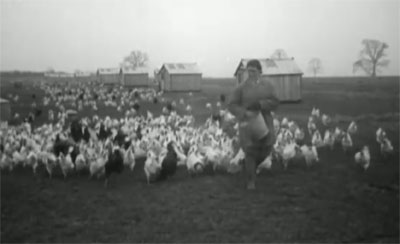 Before the First World War, ducks were the better egg layers and chicken breeds that layed 100 eggs or more per year were considered good layers. Most of the development of pure bred laying hens came after the Second World War when there were many laying trials and tests and it was common for breeders to ‘trap nest’ hens to record their individual output so that they could be used to produce further generations of laying hens.
Before the First World War, ducks were the better egg layers and chicken breeds that layed 100 eggs or more per year were considered good layers. Most of the development of pure bred laying hens came after the Second World War when there were many laying trials and tests and it was common for breeders to ‘trap nest’ hens to record their individual output so that they could be used to produce further generations of laying hens.
Development of the ‘Hybrid’
The developments with pure breeds were soon to be followed by hybrid (a cross of pure breeds) laying hens. There were millions of pounds spent during the 1950’s on creating hybrids that were not only capable of laying more eggs but also had a good feed conversion.
During this development, the parent flocks that created these hybrid layers were becoming a different ‘strain’ of their own because hens were selected for egg production rather than the way they looked.
Interestingly, duck eggs could have been on our breakfast table rather than chickens eggs… but they did not do well kept in confined conditions like chickens.
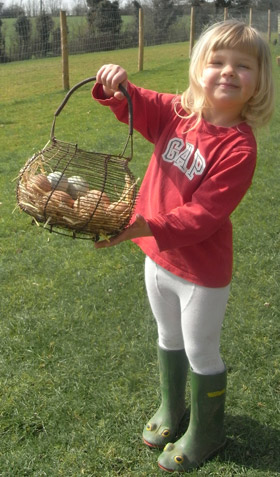 My Top 10 Chickens for Eggs
My Top 10 Chickens for Eggs
The following table lists my top 10 laying hens (a mixture of hybrids and pure breeds) and gives an estimate of the number of eggs they are capable of producing if kept in the right conditions.
Note that there are many different strains of hens from different breeders that will perform differently… egg numbers can vary on a number of other factors too, particularly with feeding and daylight levels.
Exhibition strains that have been closely bred are not usually selected for their egg laying performance. Try to purchase hens from a good ‘Utility Strain’. There are some breeders that advertise utility strains and the number of eggs they expect from their strain every year.
Hybrids are much more reliable at producing a given number of eggs and are bred mainly for this purpose.
1. Goldline (Hybrid)
The ultimate egg machine. This little commercial brown hen will lay up to 320 large brown eggs in her first year. They have a good feed ratio and are very similar to the birds used on farms to produce eggs for the consumer market. A very friendly bird that will be in your house if the door is left open!
2. White Leghorn (Pure Breed)
Small attractive birds with a good feed efficiency that lay up to 300 large white eggs in their first year. These are the standard commercial hen used in the U.S. for egg production (because white eggs are preferred). They can be quite flighty and can fly well so make sure they can be kept securely before you buy them or clip a wing to keep them on the ground.
3. Nera (Hybrid)
Hardy birds that are great foragers and layers of a good quality large brown egg. The Nera is a cross between a certain strains of Rhode Island Red and Barred Plymouth Rock, originating in Scotland. You can expect around 270 eggs in their first year.
4. Amber (Hybrid)
The Amber is a Rhode Island Red based hybrid that looks attractive and has very soft feathering. She is a fantastic layer of up to 300 medium eggs in her first year.
5. Speckledy (Hybrid)
The Speckledy is a flecked dark hen, a cross of a Rhode Island Red and Marans. She lays around 270 large dark brown eggs in her first year.
6. Rhode Island Red (Pure Breed)
The Rhode Island Red is a good layer of up to 220 large brown eggs in their first year. Be sure to get a utility strain though as these are a popular show bird.
7. Marans (Pure Breed)
Good layers of medium to large dark brown eggs. Copper Black Marans seem to be the best layers laying up to 200 eggs in a year. They are often good winter layers, with pullets coming into lay during January.
8. Light Sussex (Pure Breed)
Attractive birds that will reward you with up to 200 medium tinted eggs.
9. Araucana (Pure Breed)
Araucanas are very unique looking. They initially came from Chile in South America. The Araucana lays around 200 medium sized blue to bluish-green
10. Crested Cream Legbar (Pure Breed)
An attractive hen with a small crest that will lay up to 180 medium sized blue to bluish-green eggs that will add a little colour to your egg boxes.

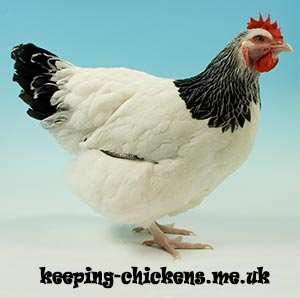

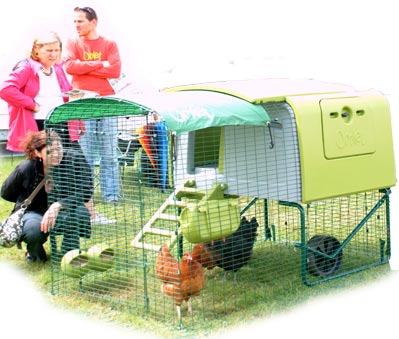
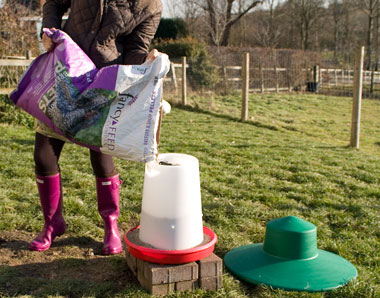

Hi, love the site!
I’d like to get chickens and have researched all sorts on your site so far. We have a large metal shed on concrete which I’m going to convert (about 3m x 4m), and they will have a similar sized run. I’d like to be able to let them into my medium sized, enclosed garden too, so from the pages earlier in the site I think I’d be best with large hens that only need a low fence that I can move about, and that won’t jump the 6 foot one in any of my neighbours. I’m therefore thinking 4 would be a good number rather than 6 bantams. I’d like larger eggs as I do a lot of cooking and its easier with the recipes, and I’d like them to be friendly so the kids can stroke them. You also mention that feathered feet chickens seem to scratch less and make less of a mess of the grass.
SO, a big, friendly, feathered footed, layer that doesn’t try to escape over a small fence (and maybe cute too) – do you have some suggestions of the best breeds I can get in the UK (Lincs/Notts) as I can’t quite get all those criteria from your short list?
Thanks so much in advance for the help!
Katy
Cochins are one of my favourites. There is a UK Chicken Breeds list on poultrykeeper.com which has some information about the individual breeds.
Hi I have a speckledy, light sussex,bluebell,columbine and a copper black,have had them 5 weeks and they are about 25 weeks old.no eggs yet but 2 days ago saw a small soft one in the run out side then yesturday watched as the light sussex layed a small soft egg in the out side run, then found 3 more soft eggs. do you think they will start laying normal eggs now , and also how do I get them to use the egg boxs.
They can lay soft shelled eggs from time to time, especially at the start or end of lay. To get them to use nest boxes, make sure they are dark (a half a feed sack pinned over the top of the entrance can help) and place dummy eggs or golf balls in the boxes to make them think it’s a good place to lay!
Hi I have 7 Warrens between a year and year and a half. I’ve been offered a cockerel Araucana large fowl, will they mix? Need advice before he is shipped off to be chopped!!
If they are similar sizes, they should be fine.
Hi,
I have a question about eggs, i have noticed just recently that the yolks in my eggs when broken almost looked partially cooked, they are not runny. What i was wondering could this be due to one of my chickens being broody and sitting on them. When i remove the eggs they are very warm, so could the heat be doing this and are the eggs ok to eat? or is there a problem with my girls?
Thank you
I haven’t seen this before. Fresh eggs stand up well and stale eggs spread out / run more so could it be they are just very fresh?
As long as you collect eggs daily, they should be fresh, even if you have a broody.
Hi, I rescued four ex-batt hens in January. Two have not laid at all and the others have been laying one egg each per day until last week, they also have stopped laying. Have they just gone off lay or do you think that they are past laying? Any help would be appreciated. They are all very happy, have been wormed and have good appetites and are fed good layers mash, corn, grit etc.
Don’t overdo the corn / treats etc (see my page on feeding chickens) but it does sound as if they are just taking a break. The laying cycle only lasts so long and this time of year often sees hens slowing down before stopping and moulting when they stop laying anyway (feathers are mainly protein as are eggs so they can’t produce both at once). If they started laying in January, they’ve had a good run of laying. Some of my hens have also stopped as some were laying in December / January this year.